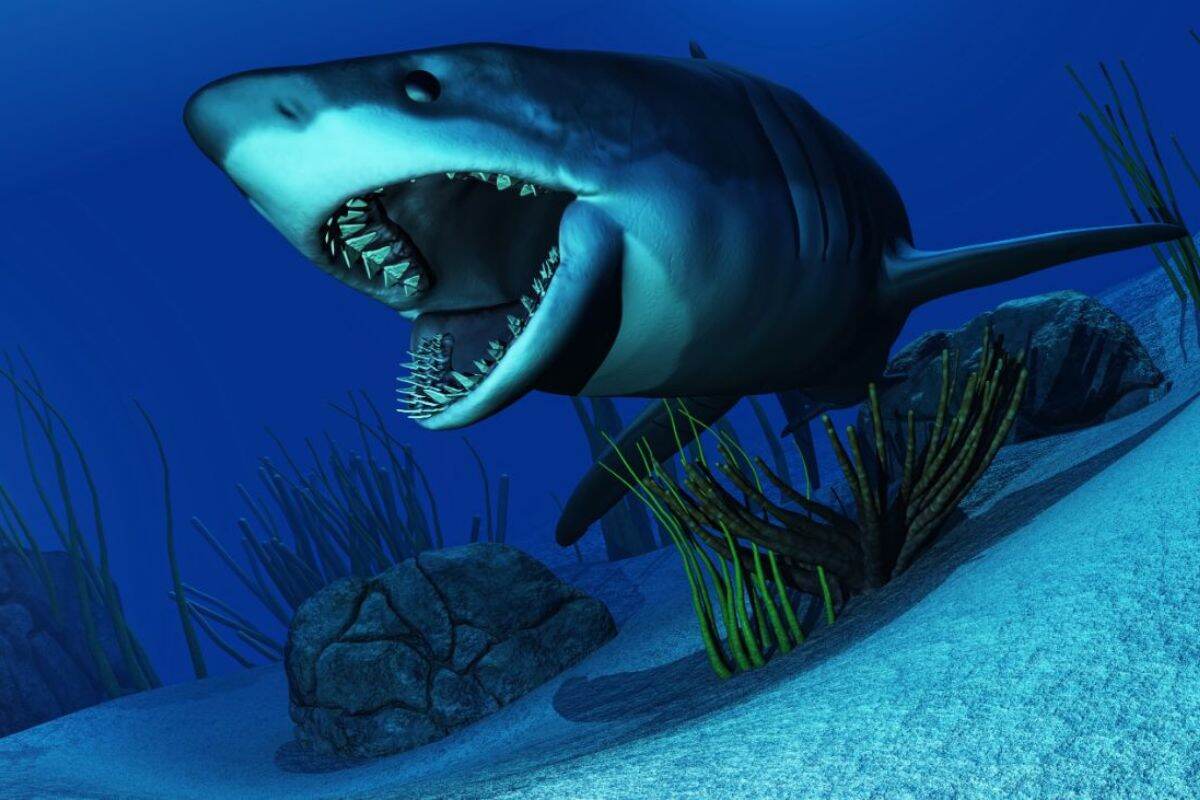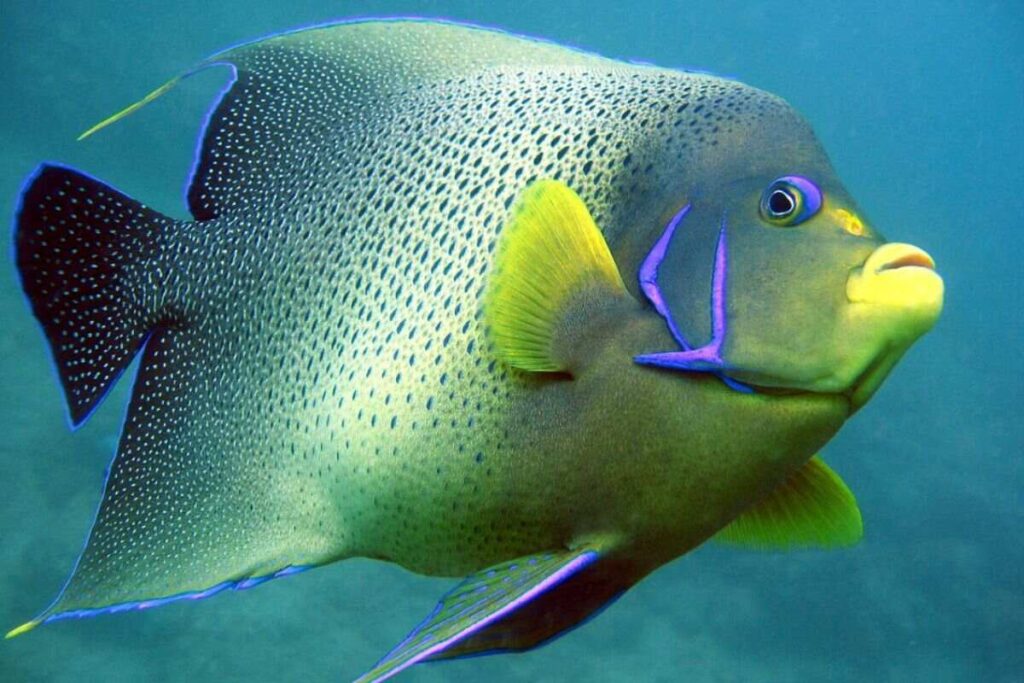Great white sharks are the ocean’s apex predators, ruling the seas with strength, speed, and evolutionary perfection. At the core of their dominance is a unique feature: their teeth. These formidable tools, honed over millions of years, are nature’s most efficient cutting weaponry, perfectly designed for hunting and survival. This article delves into the fascinating world of great white shark tooth anatomy, exploring the intricacies of their structure, the evolutionary marvels that have shaped them, and their unparalleled role in marine ecosystems.
The Evolution of the Great White Shark’s Teeth
Great white sharks have been refining their teeth for millions of years, evolving from earlier species like Carcharodon megalodon. This evolutionary journey has resulted in teeth finely tuned for the great white’s role as a top-tier predator. Their teeth have transformed in shape and efficiency, adapting to changes in prey species and hunting strategies. These teeth are not just instruments of survival but a testament to the relentless forces of natural selection, sculpting the great white into the ocean’s most fearsome hunter.
Why Are Their Teeth Called Nature’s Perfect Weapon?
Great white shark teeth are often called nature’s perfect weapon because of their remarkable ability to tear through flesh with minimal effort. Their razor-sharp serrations and robust size and shape make them unparalleled in the animal kingdom. A single bite can incapacitate or kill prey instantly, making these teeth a crucial tool for hunting and self-defense. In the natural world, few predatory adaptations are as effective as the significant white tooth, so they are often considered masterpieces of evolution.
Structure and Composition of Great White Shark Teeth
The structure of great white shark teeth reveals their incredible efficiency as hunting tools. Each tooth comprises several parts that work together to ensure maximum damage to prey, from the initial bite to the final gulp.
Enamel
The outer layer of each tremendous white shark tooth is coated in tough enamel. This enamel is more complex than human bone and is vital for withstanding the immense pressure exerted when biting through thick hide, muscle, or bone. The durability of the enamel ensures that the teeth remain effective for long periods despite the constant wear and tear of an ocean predator’s life.
Serrations
Great white shark teeth feature sharp serrations along their edges, much like a serrated knife. These serrations enable the teeth to slice through the flesh of their prey with greater ease, creating cleaner cuts that reduce resistance. This feature also allows the shark to swiftly grasp and tear apart large animals, making it a more efficient predator.
Root and Crown
Each tooth contains two parts: the crown, the visible sharp section above the gum line, and the root, which secures the tooth to the jawbone. The crown is shaped for cutting and gripping prey, while the root ensures stability during powerful bites. The interplay between these two components is essential for the tooth’s strength and function.
Types of Great White Shark Teeth
Great white sharks exhibit different types of teeth, each serving a distinct purpose during predation. These various tooth shapes are adapted to specific hunting strategies and prey types.
Incisiform Teeth
Incisiform teeth are the small, pointed teeth at the front of the shark’s mouth. These teeth are designed to cut through smaller, softer prey like fish or bite off smaller pieces of larger prey. Their sharpness and placement make them ideal for initiating an attack.
Cuspidate Teeth
Cuspidate teeth are larger and more robust than incisiform teeth, designed for gripping and piercing through tough, thick-skinned animals. They are found further back in the shark’s mouth and are essential for maintaining a firm grip on prey.
Blade-like Teeth
Blade-like teeth in the middle of the shark’s jaws are broader and flatter than other teeth types. These teeth specialize in slicing through larger prey, such as seals and sea lions. Their shape allows for efficient cutting through dense muscle tissue.
Triangular Teeth
The triangular teeth are at the rear of the shark’s jaws, which are perfectly shaped to hold onto prey and tear large chunks of flesh. Their broad, flat shape increases the surface area of each bite, ensuring the shark can maximize the damage inflicted during an attack.
Tooth Replacement Mechanism
Great white sharks are known for their incredible tooth-replacement system, which ensures they always have a fresh set of sharp teeth ready for hunting. On average, a great white shark can lose and replace thousands of teeth over its lifetime, with new teeth growing as frequently as every few weeks. Great white sharks possess multiple rows of teeth, with the outermost row being the functional set used for hunting. Behind this active row lies a series of backup teeth, which rotate forward like a conveyor belt when a tooth is lost or damaged. This endless supply of teeth ensures the shark is never left defenseless.
How Great White Shark Teeth Evolved for Hunting
Tearing Flesh with Precision
The evolution of great white shark teeth has been driven by the need to tear through flesh with precision and speed. The serrated edges of their teeth allow the shark to slice through prey quickly, while each tooth’s sheer size and strength ensure that the prey is subdued in a single bite.
Adapting to Different Prey Over Time
As the great white diet evolved over millennia, so did its teeth. Early ancestors of the great white likely fed on smaller fish and marine reptiles, but as the shark’s size increased, its teeth adapted to larger, more challenging prey. This evolutionary shift has resulted in teeth ideally suited for taking down marine mammals like seals, which form the bulk of the modern great white’s diet.
The Role of Tooth Shape in Prey Selection
Why Different Tooth Shapes Matter
The varying shapes of a great white shark’s teeth are not random; they serve a specific purpose in helping the shark catch and consume different types of prey. Each tooth type is specialized for a particular role in the shark’s predation strategy, ensuring the shark can effectively tackle a wide range of prey species.
Specific Prey and the Perfect Tooth for the Job
For smaller, faster prey like fish, the shark relies on its incisor teeth to easily slice through flesh. For larger prey, such as seals, the shark uses its cuspidate and triangular teeth to hold onto and tear apart the animal. This adaptability allows the great white to thrive in diverse marine environments.
Comparison with Other Shark Species’ Teeth
Unique Features of Great White Shark Teeth
Great white shark teeth are unique in size, strength, and serrated edges. While many other shark species have sharp teeth, few match the cutting power of the great white. The great white’s teeth are much larger than smaller sharks, allowing them to take on bigger prey.
How Great White Teeth Compare to Other Apex Predators
Compared to other apex predators, such as orcas or crocodiles, the great white’s teeth are specialized for cutting rather than crushing. This specialization gives the great white an edge in hunting marine mammals, which require clean, efficient bites to incapacitate.
How Teeth Reflect the Age and Size of Great White Sharks
Determining Age Through Tooth Examination
Scientists can estimate the animal’s age by examining the wear and structure of a great white shark’s teeth. Older sharks often have more worn teeth, while younger sharks display sharper, pristine teeth. This information provides valuable insights into the shark’s life history and growth patterns.
Do Bigger Sharks Have Bigger Teeth?
More giant white sharks tend to have more prominent, robust teeth than their smaller counterparts. These larger teeth allow them to take on more substantial prey, cementing their role as apex predators. The size of a shark’s teeth is often directly related to its overall body size, making tooth size a reliable indicator of its age and strength.
Fossilized Great White Shark Teeth
- Fossilized great white shark teeth provide a window into the past, offering clues about ancient shark species and their evolutionary history. These fossils reveal tooth shape and size changes over time, helping scientists understand how the great white has adapted to its environment.
- Fossilized shark teeth are invaluable in paleontology, as they offer insights into ancient sharks’ diet, behavior, and environment. These fossils help scientists trace the evolutionary lineage of modern great whites, shedding light on their development over millions of years.
Great White Shark Teeth in Pop Culture and Mythology
The Infamous Reputation of Great White Teeth
In popular culture, great white shark teeth have become synonymous with danger and fear. Films like Jaws have cemented the shark’s fearsome reputation, with its teeth often depicted as a symbol of death and destruction. This portrayal has made the great white one of human history’s most iconic and feared animals.
Teeth as Symbols of Power and Fear
In various cultures, shark teeth are seen as symbols of strength, power, and protection. Ancient Polynesian warriors, for example, often wore necklaces made from shark teeth, believing they would grant them the strength and courage of the shark. These cultural associations have only added to the mystique and allure of great white shark teeth.
Conclusion
The great white shark’s teeth are more than just physical tools; they are evolutionary masterpieces. Over millions of years, these teeth have been fine-tuned to perfection, allowing the great white to dominate the marine food chain. Their strength, shape, and regenerative abilities make them nature’s ultimate weapon, ideally suited to the life of an apex predator. As we continue to study these remarkable creatures, it becomes clear that their teeth are a critical factor in their survival, and their impact on marine ecosystems is profound.
Frequently Asked Questions (FAQs)
How Strong Are Great White Shark Teeth?
Great white shark teeth are powerful and capable of withstanding immense pressure and force. Their strength lies in their composition, particularly the thick enamel that covers each tooth, making them resistant to damage even during violent predatory attacks.
How Many Teeth Does a Great White Shark Have in Its Lifetime?
Thanks to its unique tooth-replacement system, a great white shark can cycle through thousands of teeth over its lifetime. On average, a great white may lose a tooth every few weeks, with new ones growing in to replace them almost immediately.
Do Great White Sharks Ever Suffer Tooth Decay?
Unlike humans, great white sharks do not suffer from tooth decay. Their teeth are designed for short-term use and constantly replaced, meaning any damage or wear is quickly remedied by the growth of a new tooth.
Why Are Fossilized Shark Teeth Black?
Fossilized shark teeth are black due to mineralization that occurs over millions of years. As the tooth becomes buried in sediment, minerals like iron and manganese replace the organic material, resulting in the distinctive black coloration.
Can a Great White Shark Regrow Lost Teeth?
Yes, great white sharks are constantly regrowing lost teeth. This ability is part of their natural adaptation, allowing them to maintain their hunting efficiency throughout their lives. This regenerative process is one of their most remarkable tooth anatomy features.





















